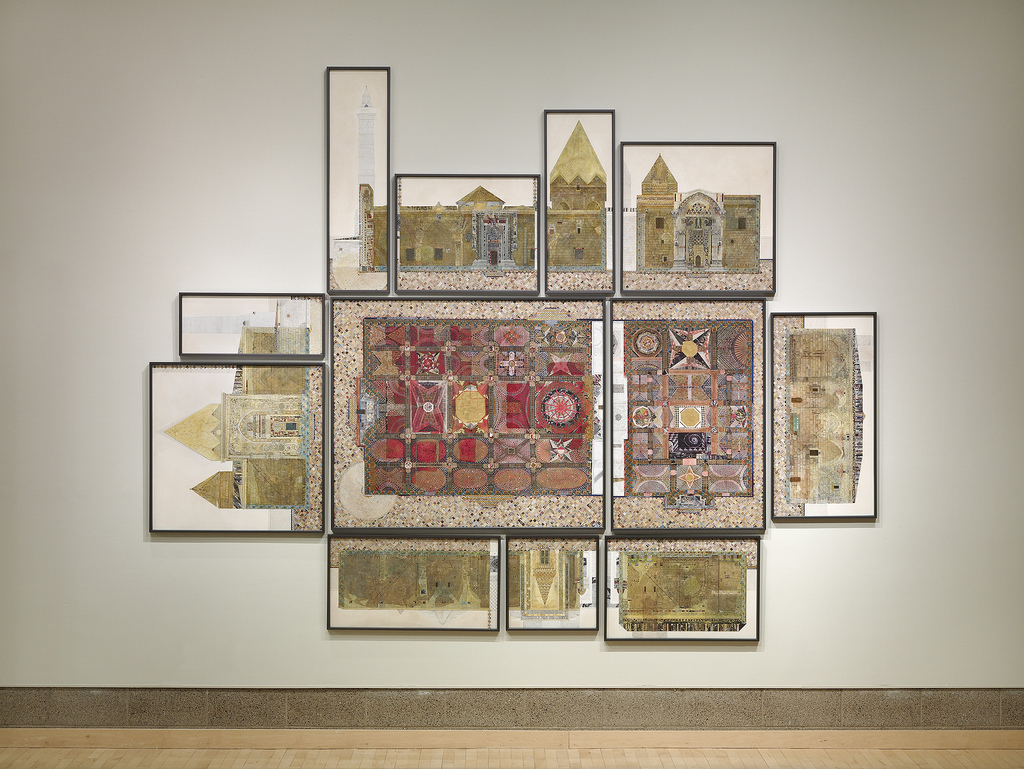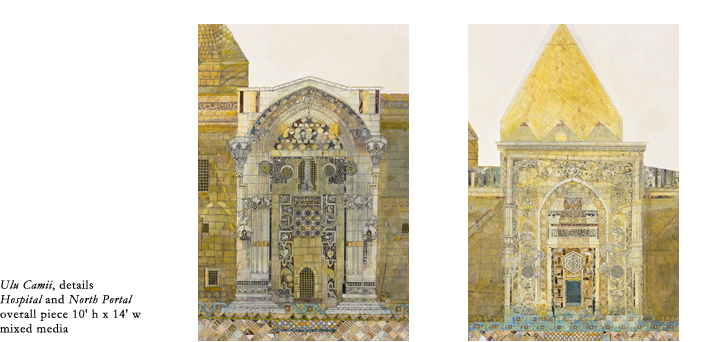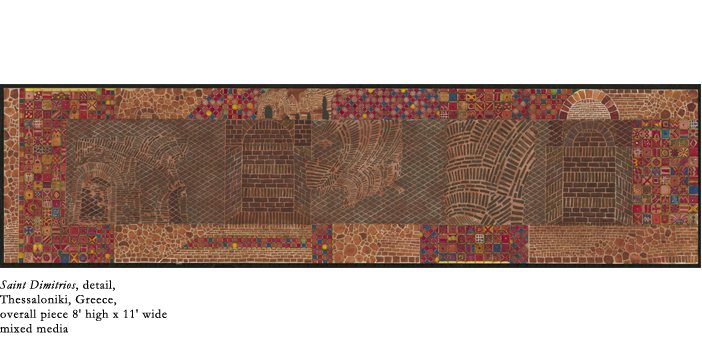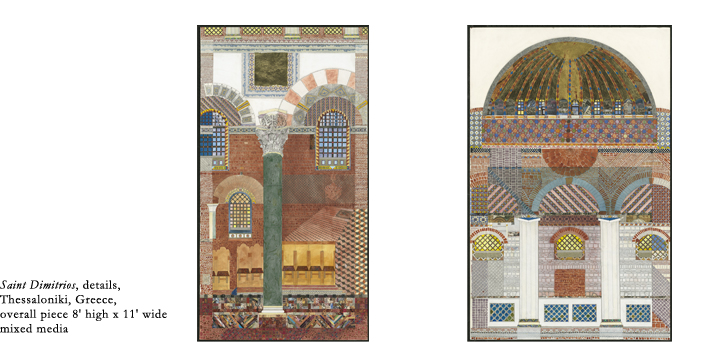
Mary Griep brings centuries-old sacred spaces to life
Standing before one of Mary Griep’s mixed-media drawings in the “Anastylosis” series, the viewer cannot but be overwhelmed. Through a series of piecemeal sketches and lavish, elaborate collages, she reproduces some of the world’s most magnificent holy sites dating from the medieval period, from the 10th to 12th centuries C.E. — grand cathedrals, palaces and temples, opulent mosques.
But these aren’t merely visual reproductions. Griep brings a pilgrim’s eye (and maybe a touch of holy madness) to the project, immersing both herself and the viewer in the grandeur of these edifices’ tiniest details, in the service of capturing the awe and wonder of them, inside and out — the human ingenuity, soulfulness and sheer ambition behind their creation.
From this series of works, more than a decade in the making, a handful is on view now in the eastern wing of St. Kate’s University’s Catherine G. Murphy gallery: a number of sketches and two large collages, of the Ulu Camii in Turkey and Borgund Stave Church, St. Dimitrios in Greece (14 feet and 11 feet in width, respectively).
The level of detail and visual complexity she deploys, particularly in the monumental works — the lengths to which she’s willing to go to mimic the assembly and disassembly involved in centuries’ worth of use, wear and repair — is, quite simply, astounding.
Each large collage is the product of years of rumination, with close attention paid to capturing each corner, every mosaic and architectural flourish. The final work is a plural rather than singular creation, a composite of study after study of these details (in both photos and drawings), which she subsequently rips apart and reconfigures later in the finished piece. The layers upon layers of meticulous detail in Griep’s work evince the syncretic, centuries’ worth of contributions— from builders and worshippers, caretakers and robbers alike — which comprise the buildings themselves.
She writes, “I have found drawing a powerful way of exploring and expressing the experience of these spaces … None of these medieval buildings looks as they did when originally built. Each has been neglected, damaged and cared for by humans, damaged by the environment and, most certainly, restored and rebuilt at different times. … Every age imposes its own ideas on these monuments. Who knows what is or was original? Does it matter?”
She poses the question: “Are these buildings living sacred spaces, or merely nostalgic artifacts?” And with her vibrant homage to these holy sites, Griep also offers an eloquent reply.
“Anastylosis: Mary Griep” is on view through March 31 in the East Gallery of the Catherine G. Murphy Gallery at St. Catherine’s University, 2004 Randolph Ave., St. Paul, Minn. Gallery hours are Mon. through Fri. 8 a.m. to 8 p.m.; Sat. and Sun., noon to 6 p.m. For more information: http://www.stkate.edu/gallery/11-12/anastylosis.php.
Recent Content
-
Artsarticle ·
-
Artsarticle ·
-
Artsarticle ·




